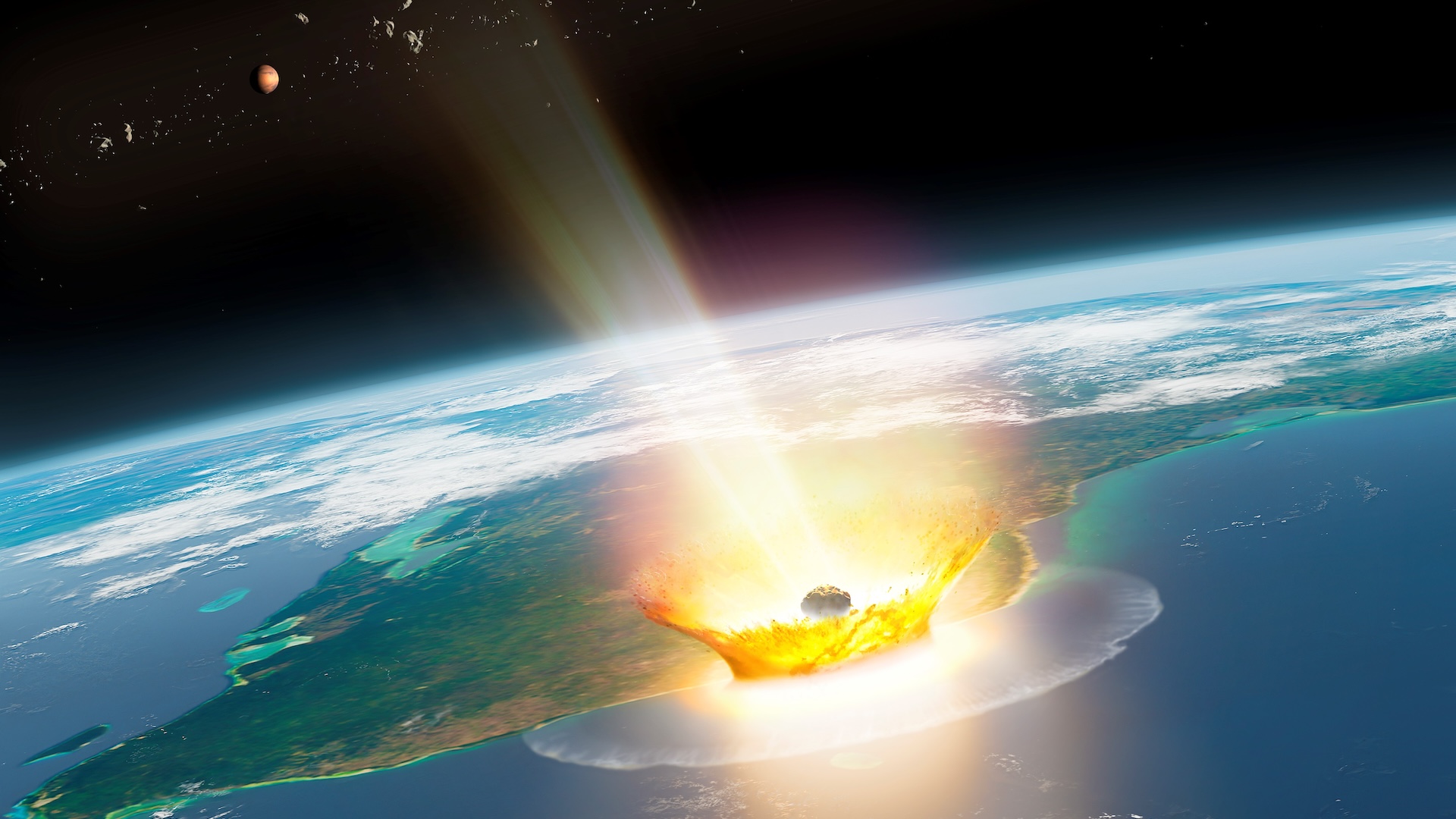
A nuclear bomb could save Earth from a catastrophic asteroid impact, according to a first-of-its-kind lab study.
The new experiment, conducted using the world's most powerful laboratory radiation source, demonstrated that detonating a coordinated nuclear strike close to an asteroid would produce enough force to deflect it from a fatal collision with our planet.
Yet the explosion wouldn't be doing the heavy-lifting. Rather the powerful burst of X-rays made by the blast, according to the team that operates the Z machine radiation source at Sandia National Laboratory. The researchers published their findings Sept. 23 in the journal Nature.
"To most people, the danger from asteroids seems remote," lead author Nathan Moore, a physicist at Sandia National Laboratories, said in a statement. "But our planet is hit by BB-sized asteroids every day. We call them shooting stars. We don't want to wait for a large asteroid to show up and then scramble for the right method to deflect it."
In 2023, the U.S. National Academy of Sciences published a report arguing that planetary defense is a national priority. Previous simulations have shown that the shockwave made by a nuclear bomb could provide enough force to successfully deflect an oncoming asteroid. But the asteroids that were harmlessly deflected in these scenarios were ones spotted decades in advance. Asteroids appearing just several years away from Earth were deemed too close to nudge away without sending dangerous fragments hurtling to Earth.
More troubling still, an ongoing NASA sky survey has estimated that roughly 25,000 objects big enough to cause significant destruction lurk near Earth. And because many of these are hidden by the sun's glare, only one-third of the potentially hazardous asteroids have been identified.
To investigate how nukes could avert armageddon, the researchers behind the new study placed a tenth of a gram of asteroid-like silica on a piece of ultra-thin foil inside Sandia's Z machine.
After the Z machine fired, it generated magnetic fields that compressed argon gas inside into a plasma as hot as the sun. This instantly disintegrated the foil, producing a burst of X-rays that left the coffee-bean-sized silica nugget floating in the air for roughly 20 millionths of a second.
"It was a novel idea," Moore said. "A mock asteroid is suspended in space. For a one-nanometer fall, we can ignore Earth's gravity for 20 millionths of a second as Z produces a burst of X-rays that sweeps over the mock-asteroid surface 12.5 millimeters across, about the width of a finger. The trick is to use just enough force to redirect the flying rock without splitting it into several equally deadly subsections advancing toward Earth."
Having confirmed that their experimental setup works, the researchers will use it to create a database of potential impact and deflection scenarios, based on a library of hypothetical asteroids that could be consulted before a real collision.
And space agencies around the world are already working on possible ways to deflect asteroids with longer warning times. On Nov. 24, 2021, NASA launched its Double Asteroid Redirection Test (DART) mission, which successfully redirected the non-hazardous asteroid Dimorphos by ramming it off course in autumn 2022, and creating the first ever human-made meteor shower. China is also in the early planning stages of an asteroid-redirect mission. By slamming 23 Long March 5 rockets into the asteroid Bennu, the country hopes to divert the space rock from a potentially catastrophic impact with Earth.







